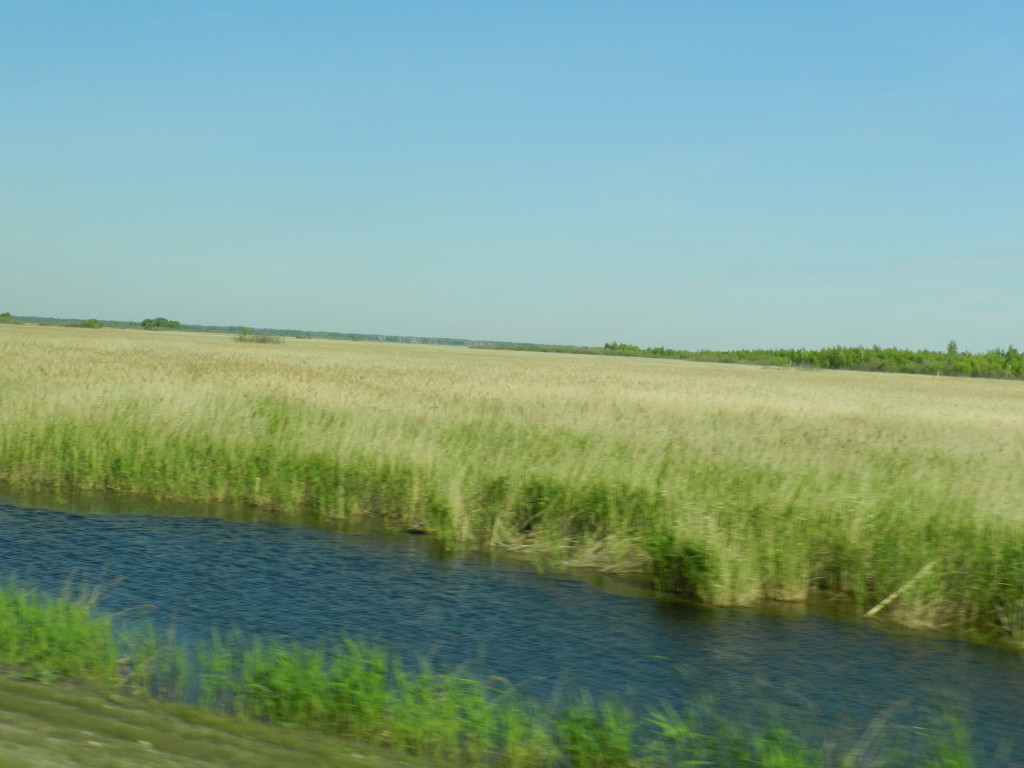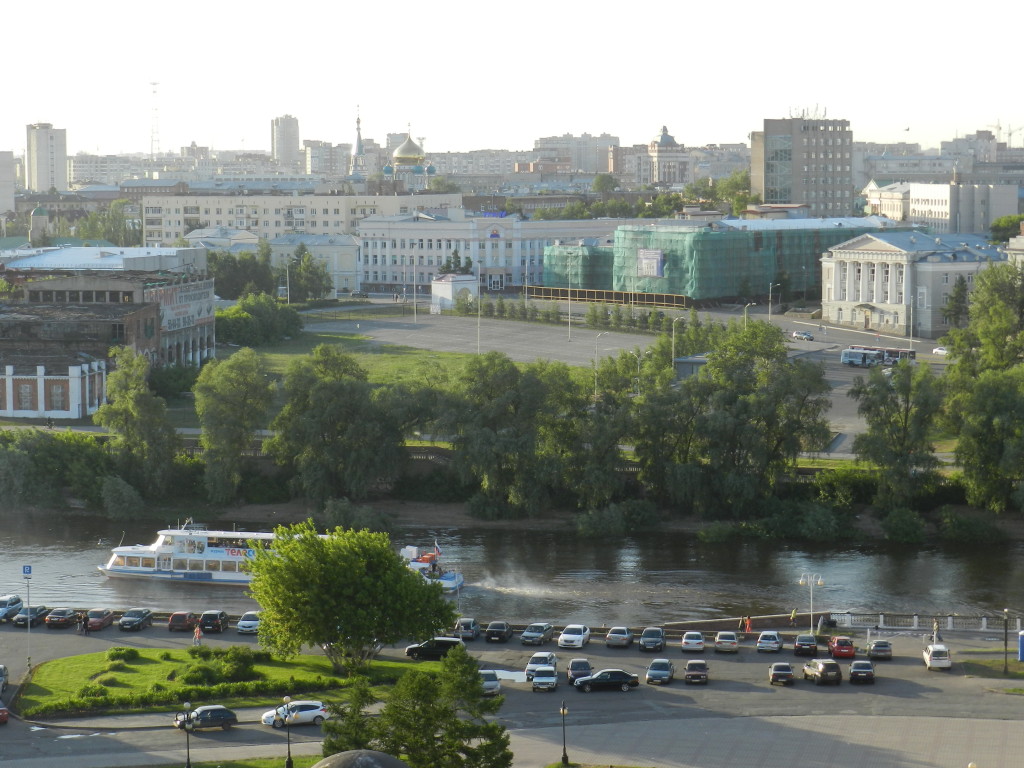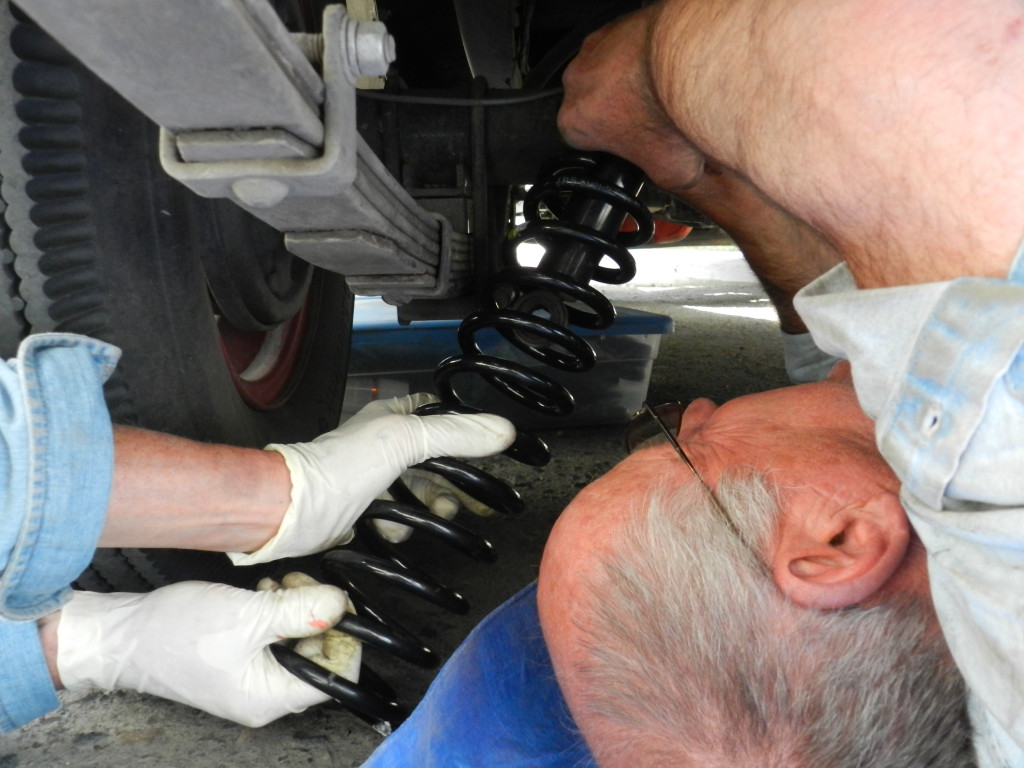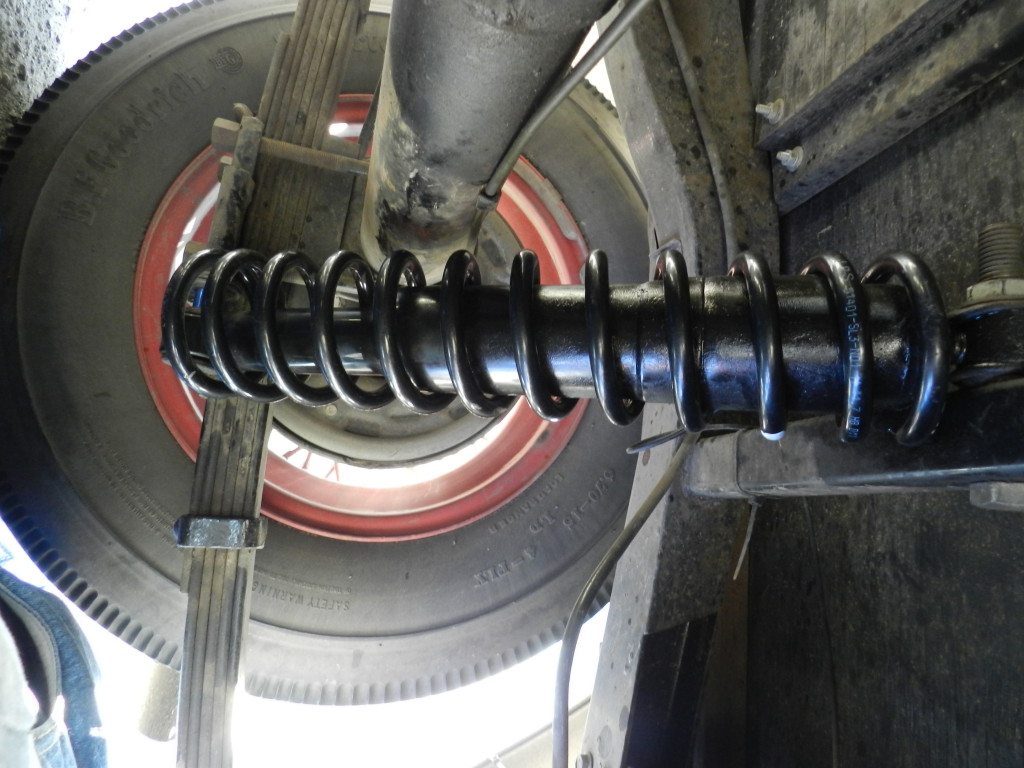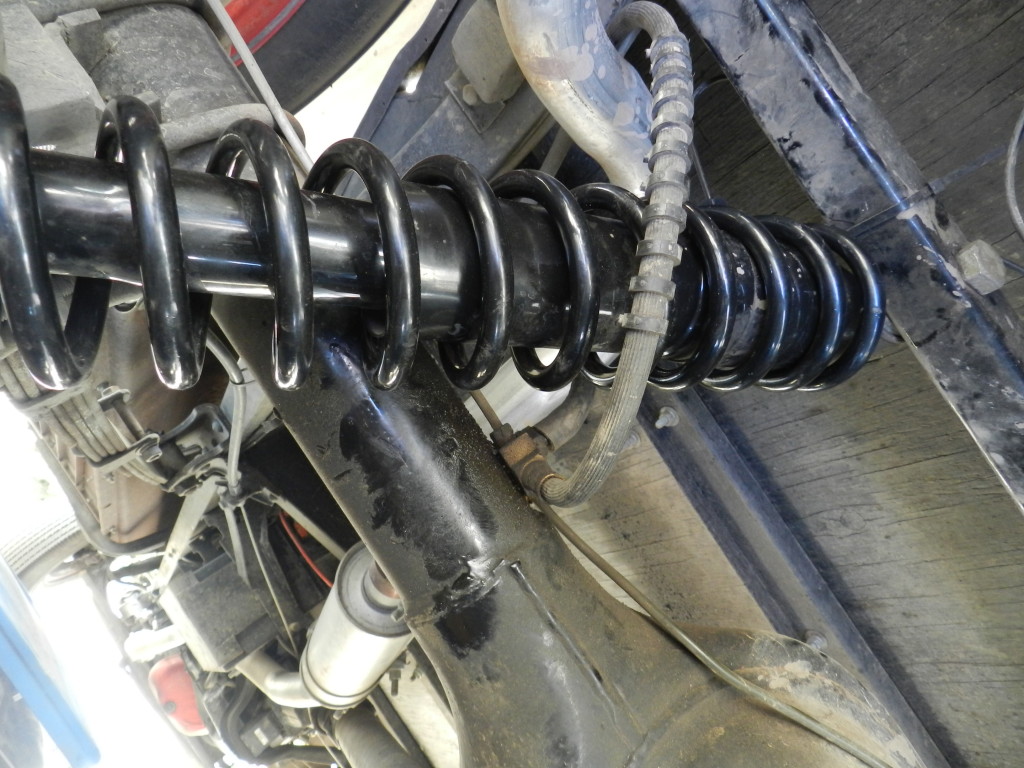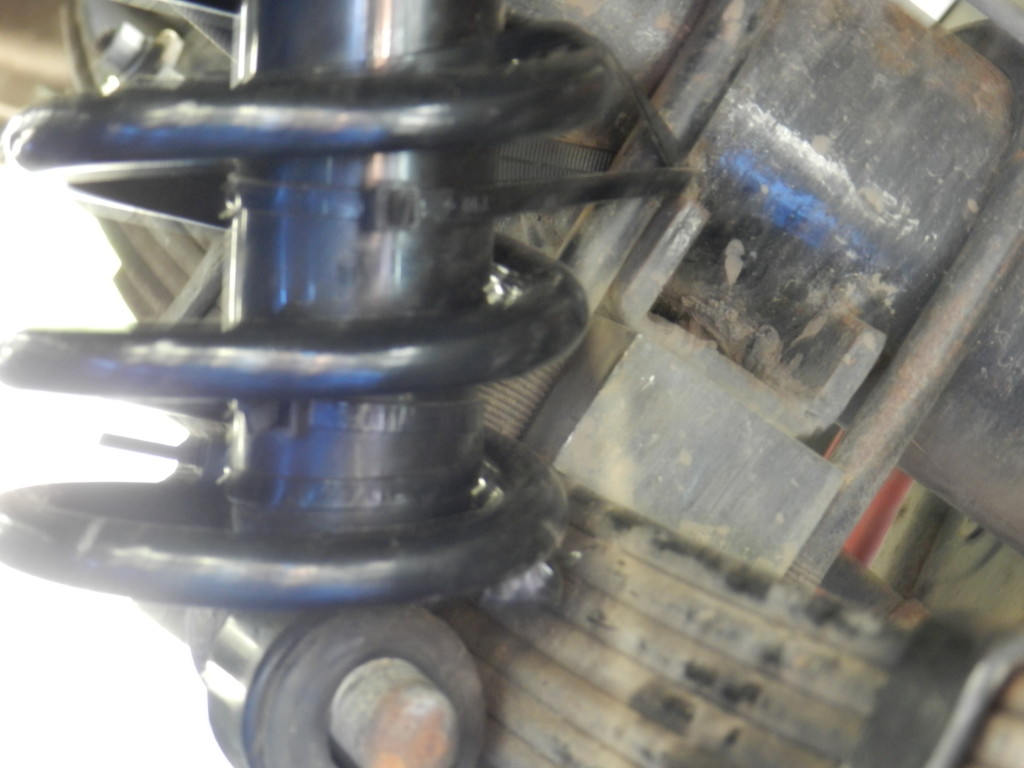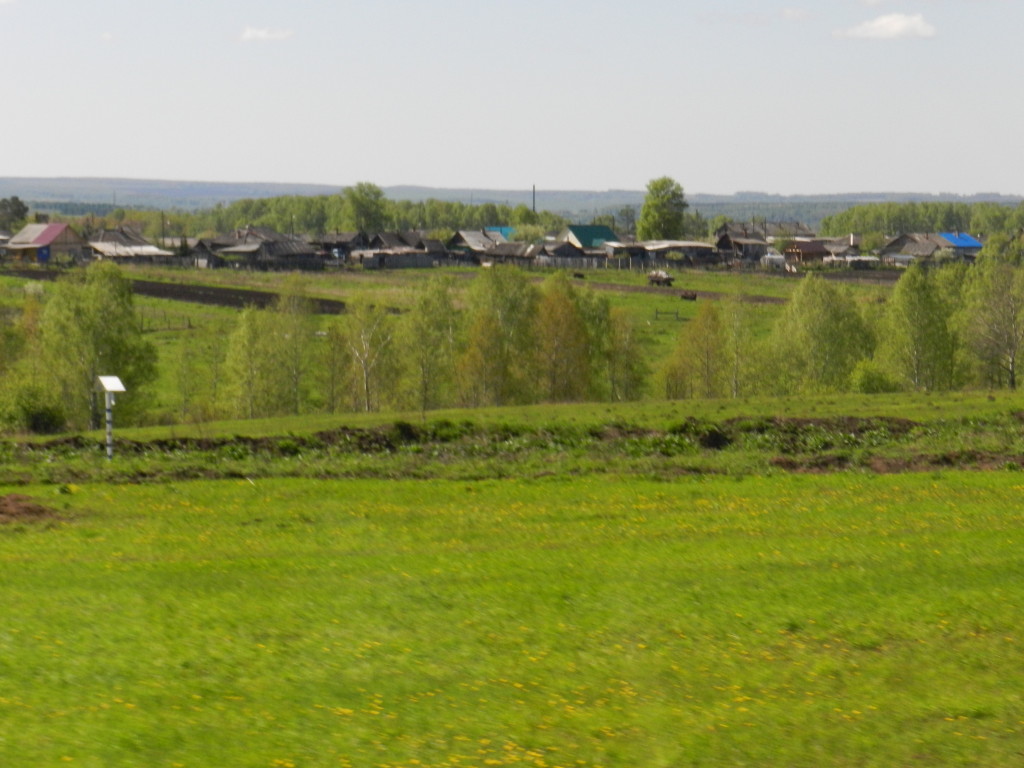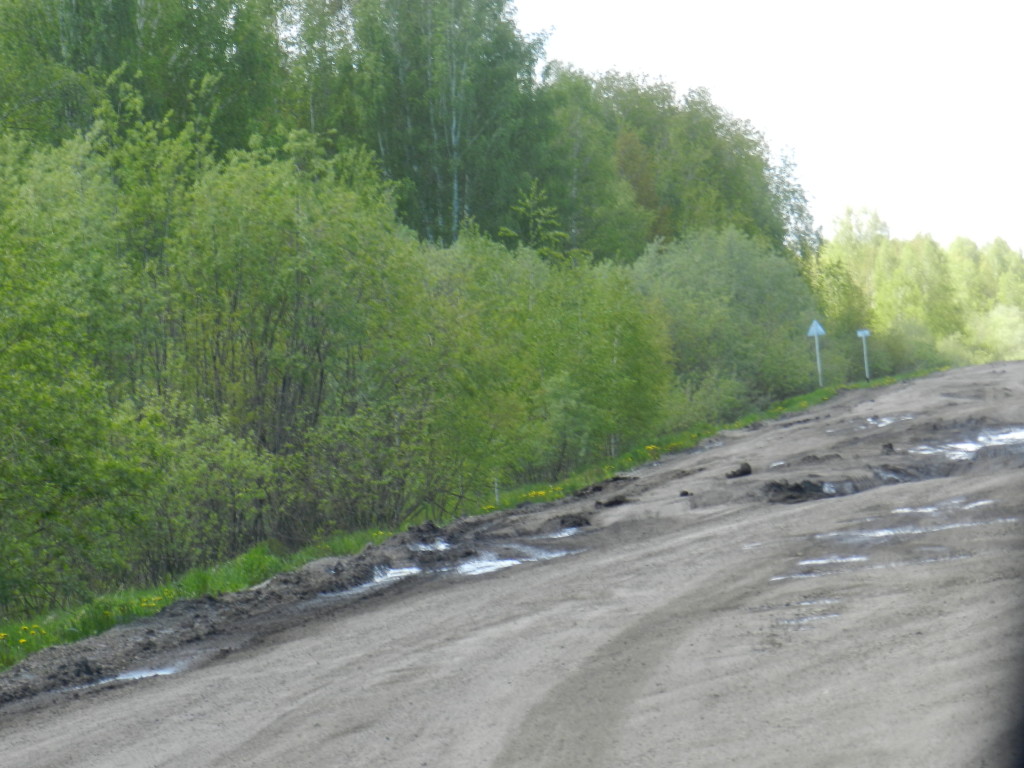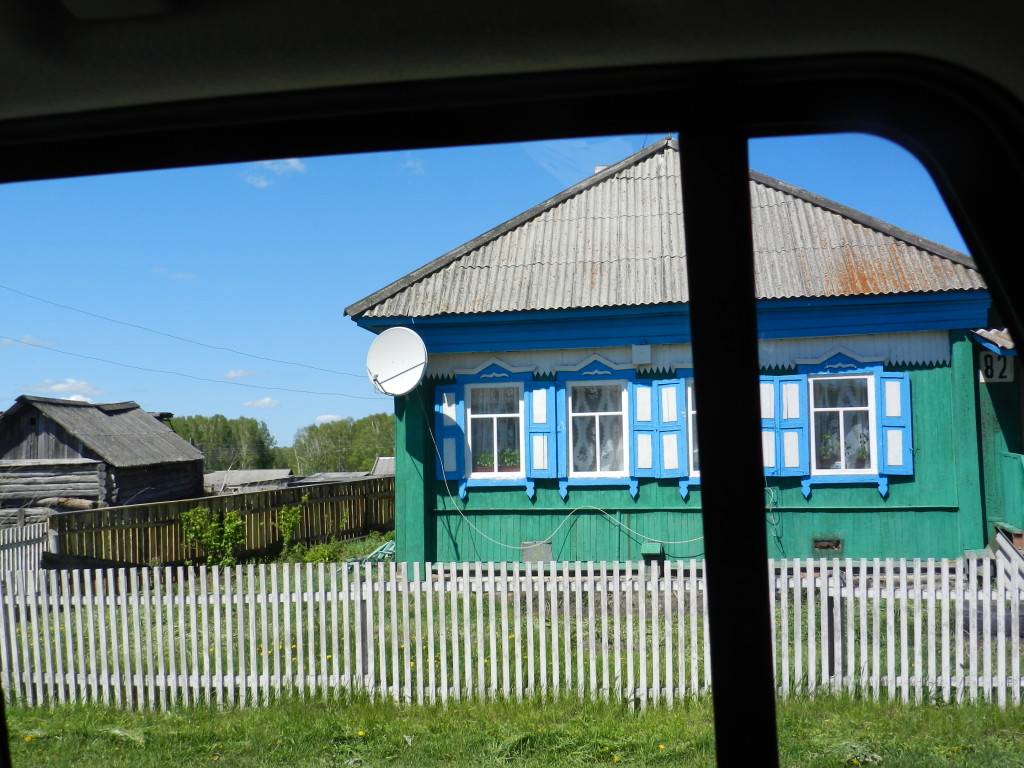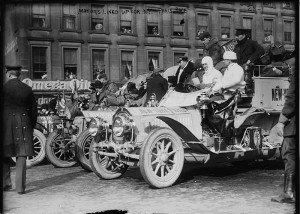It’s been a busy three days without much Internet connectivity, but we arrived in Krasnoyarsk about 12:30 this afternoon (Sunday), so I’m back online.
Last night, we had some spontaneous hosts in the town of Kansk. The woman signing John’s car in the picture below is named Irina, and she is married to Gadzhi, the gentleman who owns Zhemchug, translated Pearl, the excellent restaurant where we dined. After we ate, Irina asked if John was the one who owned “the car.” By now, we all just call the 1928 Roadster “the car,” because it’s the one that attracts all the attention! Ksenia translated Irina’s desires and said, “She is very proud of her hometown of Kansk and she would like to sign the car.” How could John refuse that offer?
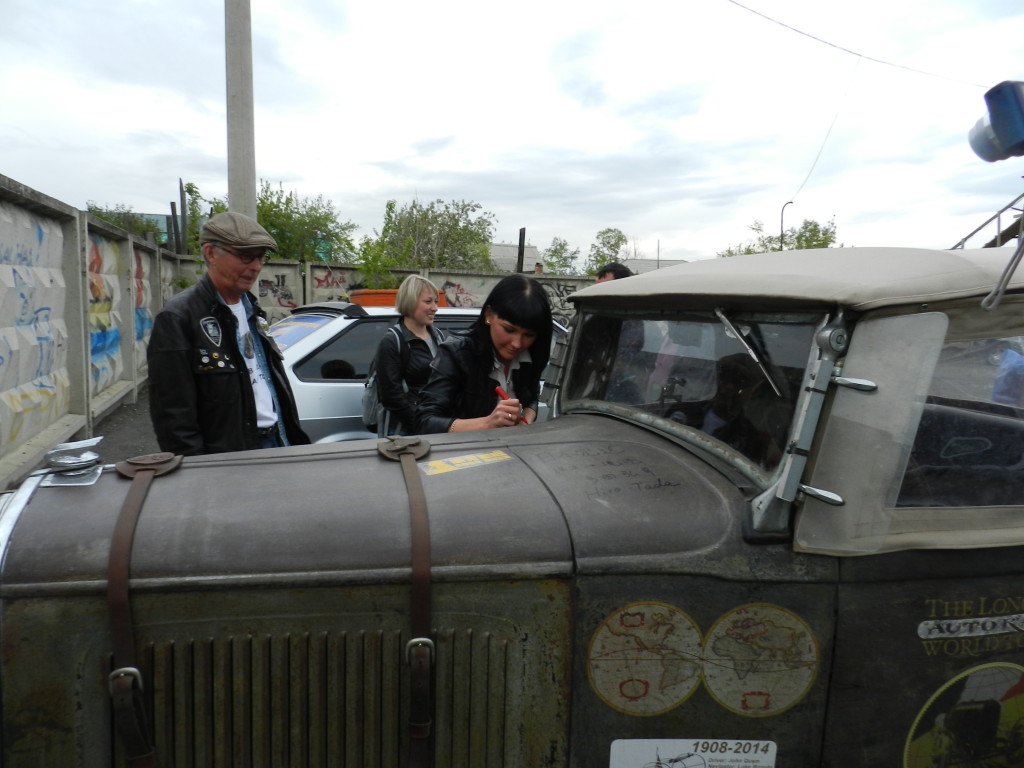
Irina signing John’s 1928 Plymouth Roadster (Eileen Bjorkman photo)
We walked 100 yards back to the parking lot where the cars were secured, where we were joined by Irina, Gadzhi, and three other Russian friends shown below.
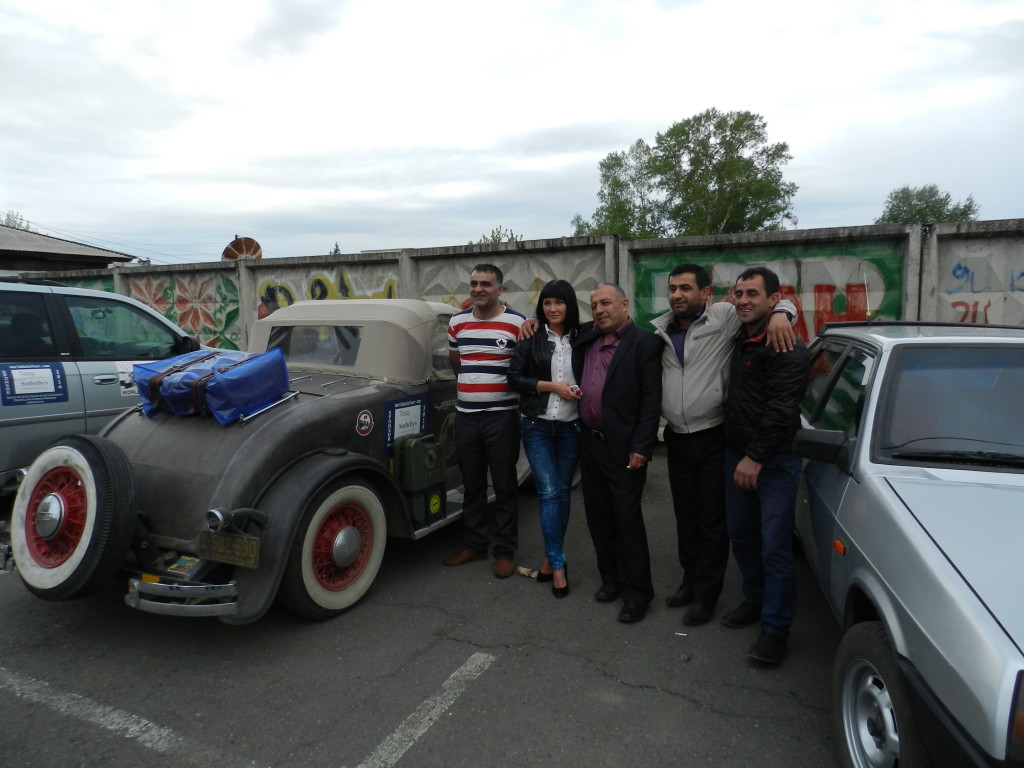
Our new Russian friends in Kansk (Eileen Bjorkman photo)
After the signing, Irina and Gadzhi insisted that we come inside a tent outside the restaurant for some champagne and chocolate. We had many toasts as the ten of us shared three bottles of champagne and two delicious chocolate bars. Our new Russian friends wanted us to stay for vodka shots, but we begged off so we could get an early start today. If you ever get to Kansk, be sure to stop by Zhemchug/Pearl for some terrific hospitality — they love foreigners!
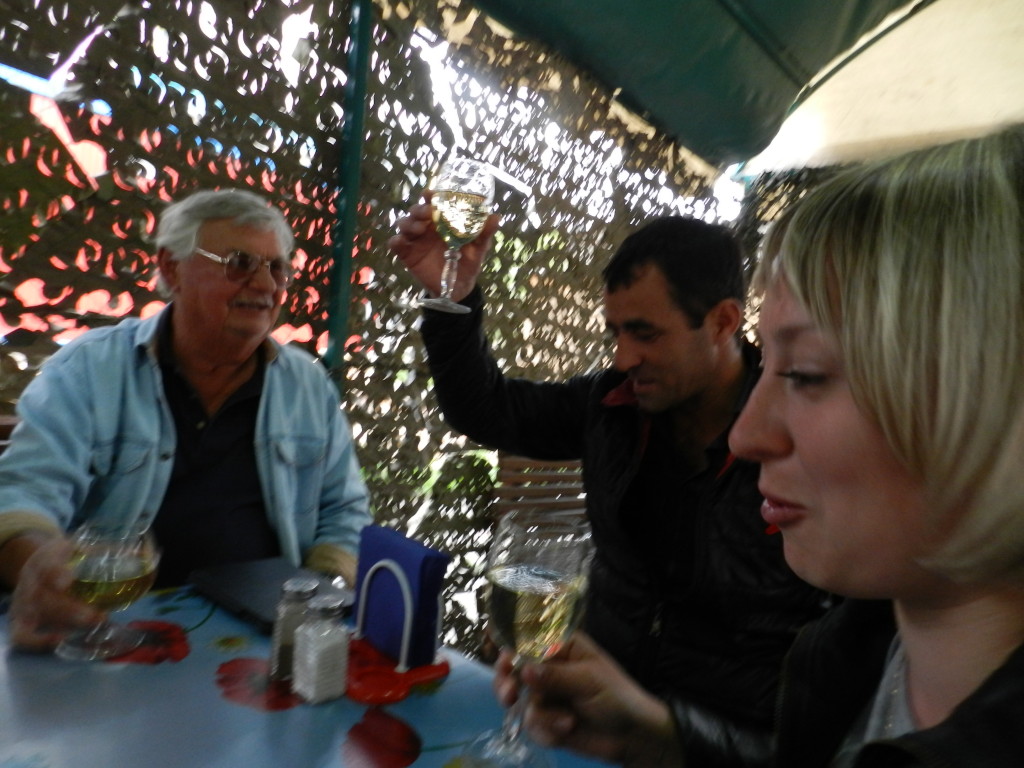
Champagne and chocolate toasts (Eileen Bjorkman photo)
Our drive from Irkutsk to Tulun on Friday started with the realization that we were about 3,000 miles from Moscow, according to the sign in our hotel — it actually says “5039 km.” At this point in the trip, 3,000 miles doesn’t sound very daunting any more.
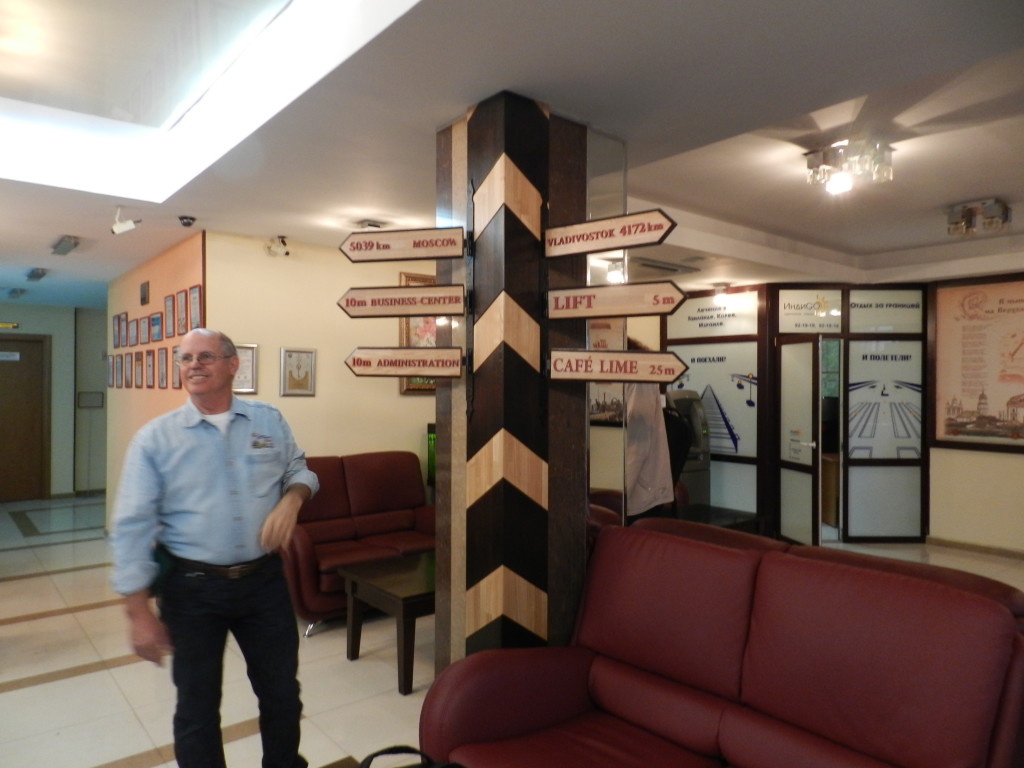
Luke with the road sign in our hotel in Irkutsk (Eileen Bjorkman photo)
It was a rainy day, and we followed the Trans-Siberian Railway for much of the trip, just as the 1908 racers did. The terrain was mostly rolling hills, with a mix of forested areas, pastures, and plowed fields. Today, we stopped for a train for the first time, and I got this nice shot as the train approached the crossing.
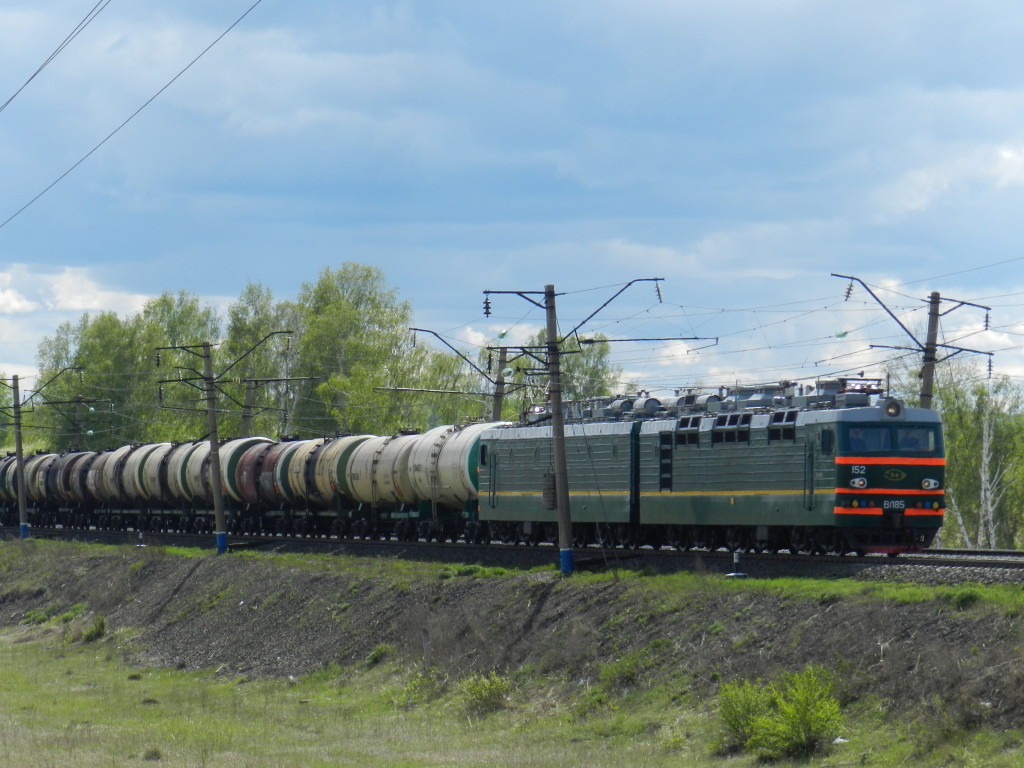
Railroad crossing on the way to Tulun (Eileen Bjorkman photo)
As we drove along, I noticed many buildings painted in IKEA blue and yellow colors. Maybe someone from IKEA made a good deal with a paint dealer in Russia? Here’s some buildings behind our hotel in Tulun.
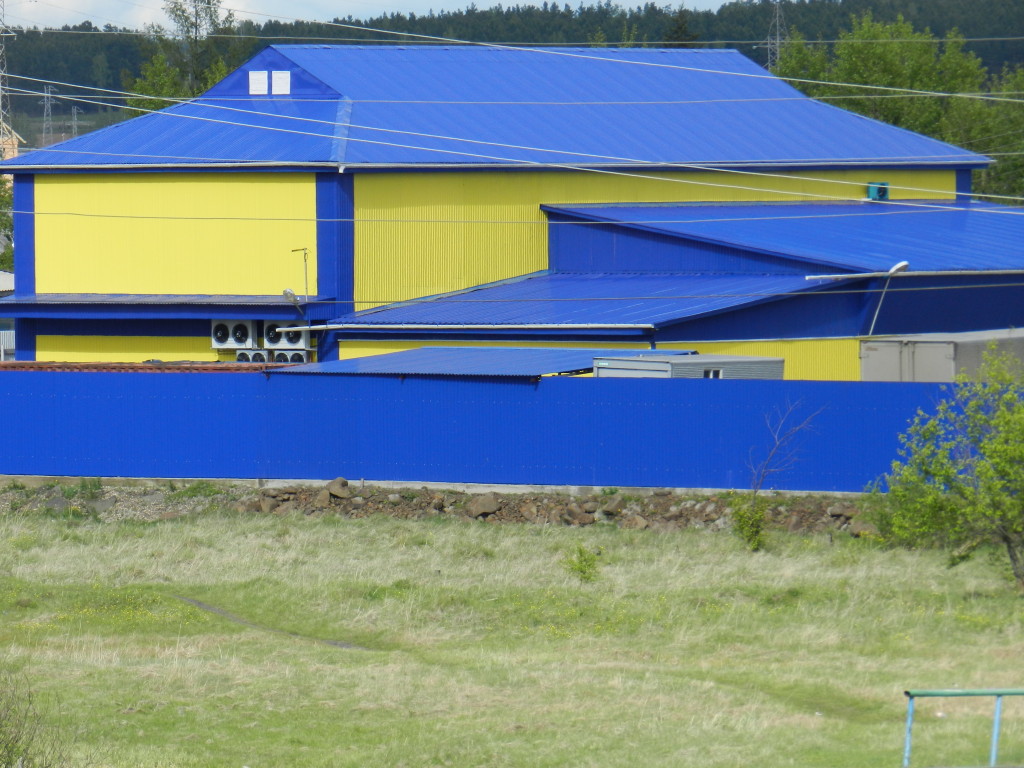
IKEA colors in Tulun (Eileen Bjorkman photo)
We also got some bad news on Friday. There was a problem with Russian Customs in Moscow when the package with the shocks for the Roadster arrived, and the package was returned to the U.S. So Luke had to stay up late once again to get another package sent over, which we hope won’t have the same problem. The new shocks are being shipped to Novosibirsk, where we arrive on Wednesday. On the other hand, the Roadster hasn’t blown another brake light fuse, so maybe that problem has finally been fixed for good.
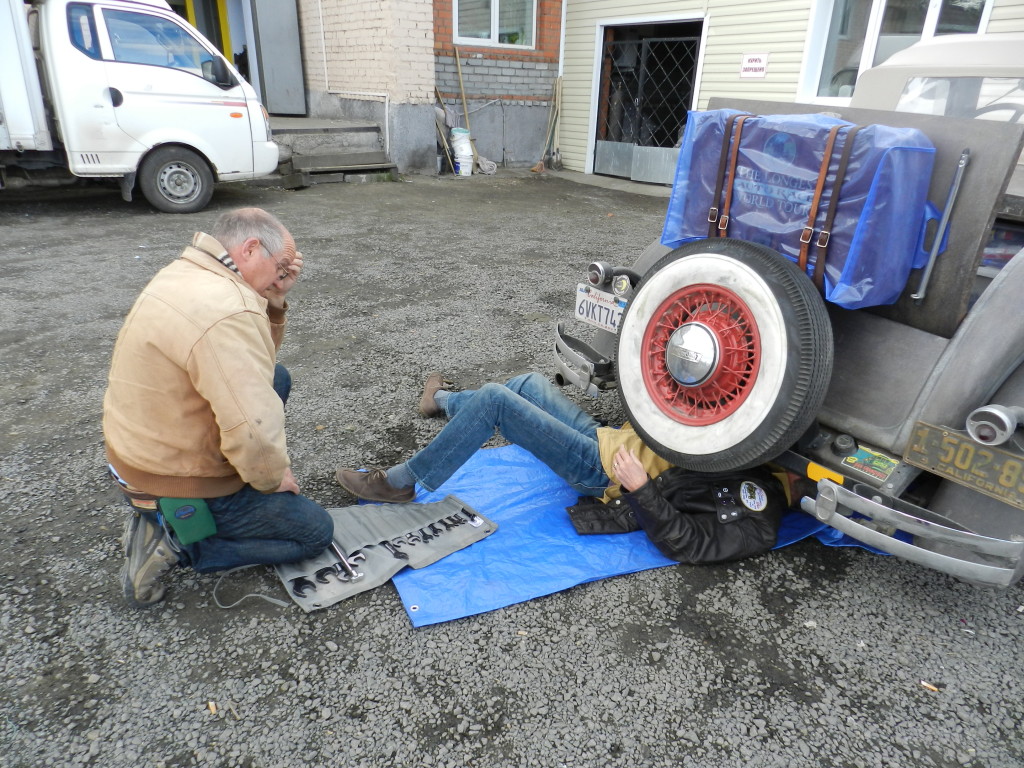
Checking the Roadster to be sure it will make it to Novosibirsk (Eileen Bjorkman photo)
Saturday morning, after singing Happy Birthday in Russian over a cell phone to Luke’s brother, Tony, which won’t win any Grammy awards, trust me, we headed off for Kansk. We had a very slow morning over roads under construction, going only about 30 miles in the first three hours. We passed this monument on the way into the town of Sherberta, and Ksenia said that the monument was used to indicate Soviet-era collective farms.
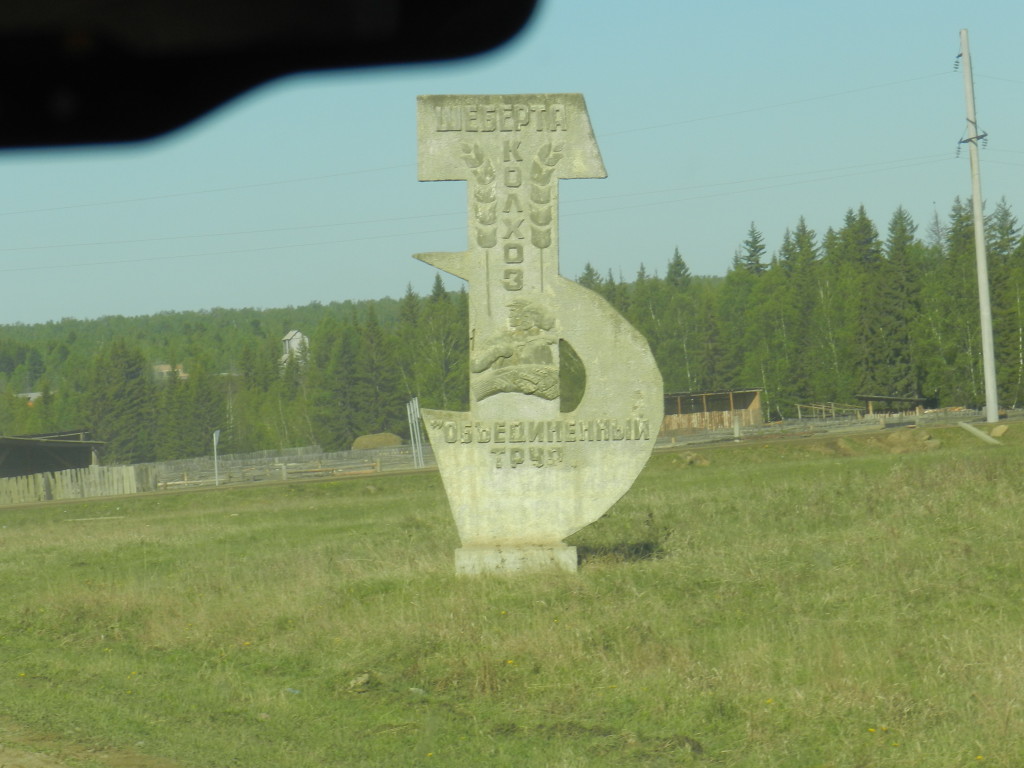
Sign for old collective farm in Sheberta (Eileen Bjorkman photo)
After about three hours, we reached better roads and the pace picked up, and we began to anticipate a mid-afternoon arrival in Kansk. But we always seem to find a way to extend our day, and yesterday was no exception.
About 12:30, at a fueling stop near the small town of Alzamay, John discovered that a bag containing his passport and other important papers was missing. After tearing the Roadster apart, we concluded that it had been left in Tulun. Ksenia immediately got on the phone with the hotel, and after the security folks reviewed video from the parking lot that morning, John realized that the bag had probably been left on the driver’s side running board by accident and then fell off as we departed the hotel. We pondered what to do while Ksenia made dozens of phone calls to Tulun, to Mir Corporation, and to the police. At least we had managed to pull into the nicest truck stop we have seen so far, complete with two mini-markets, a café, a hotel, and clean flush toilets, so it wasn’t a bad place to hang out for a few hours on a sunny 70 degree afternoon in Siberia.
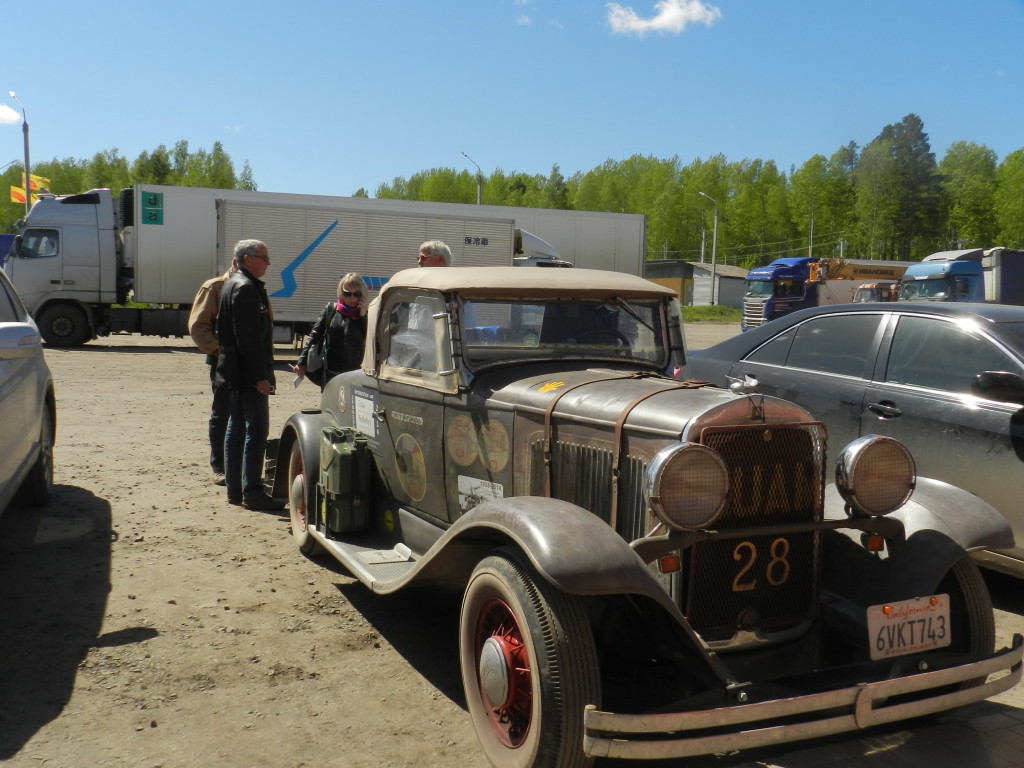
Discussion options regarding the missing papers (Eileen Bjorkman photo)
John called the consulate in Ekaterinburg and they were very helpful, saying that he can get an emergency passport when we arrive there. In the meantime, we drove into Alzamay to file a police report to help with the other missing paperwork. While John and Ksenia took care of that, Luke and I admired this Kermit-the-Frog colored troop carrier that, based on my limited Cyrillic and Russian skills, I believe was used for counterterrorism operations at some point.
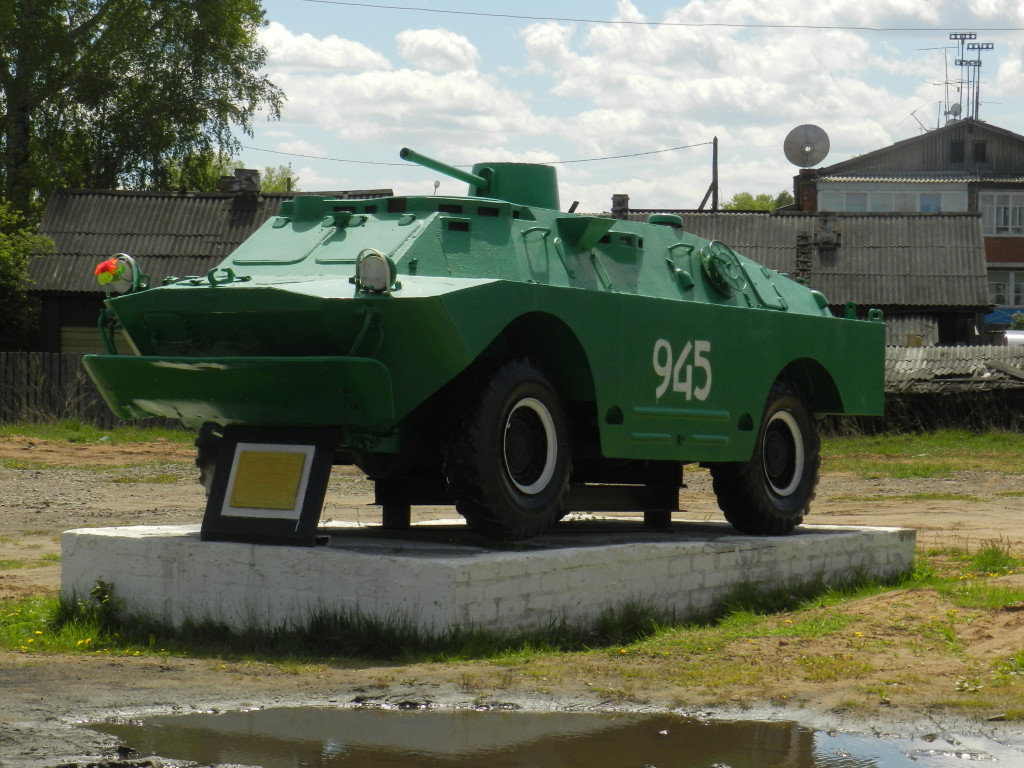
Outside the police station in Alzamay (Eileen Bjorkman photo)
The police in both Tulun and Alzamay have been very helpful, and we are still optimistic that John’s papers may yet be located. But with the help of Ksenia and Mir, we should be able to recover from this before we cross the Russian border again on June 28.
Today, we were thankful for an uneventful 140 mile drive to Krasnoyarsk. We have the day off tomorrow to rest, run errands, and work on recovering John’s paperwork. On Tuesday, we have one of our longest drives of the trip, 603 km to Tomsk, but we believe the roads will be much better!
